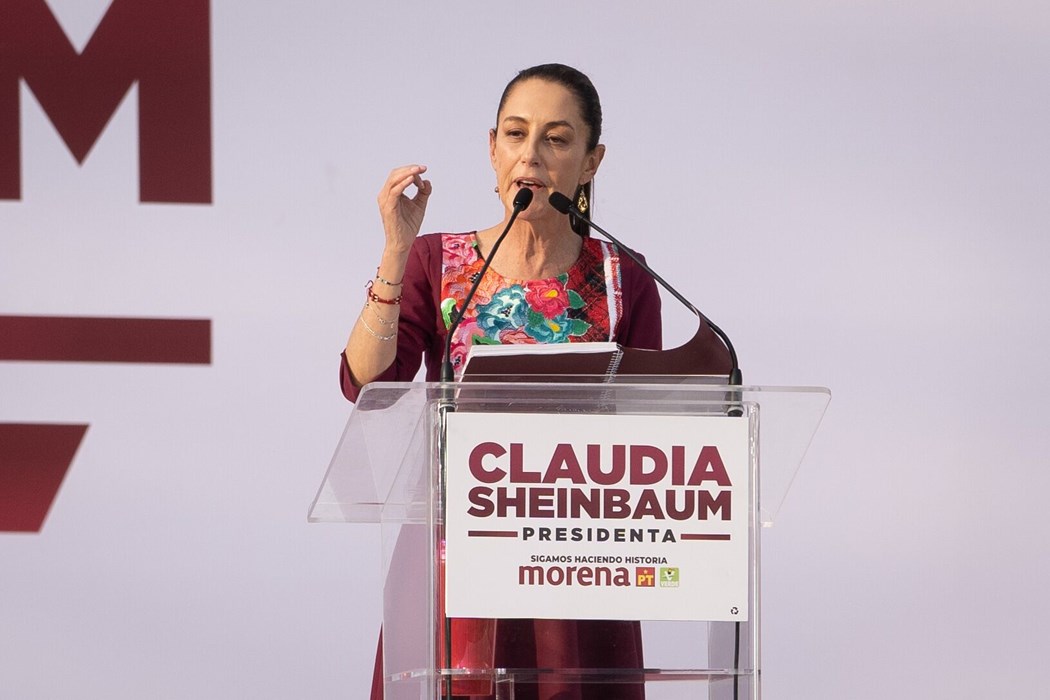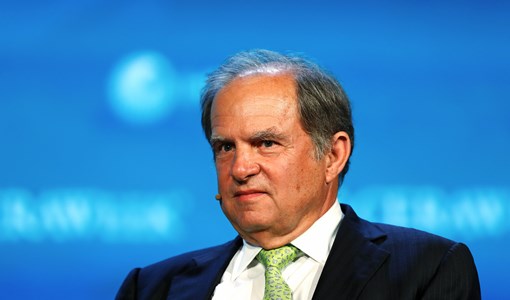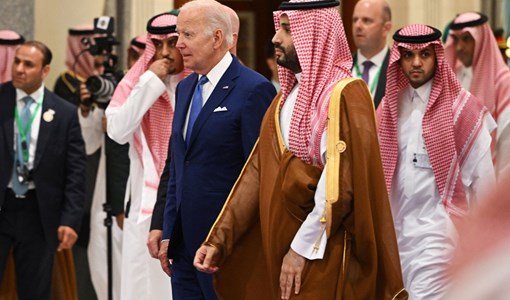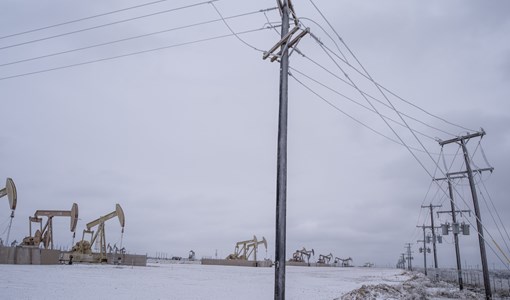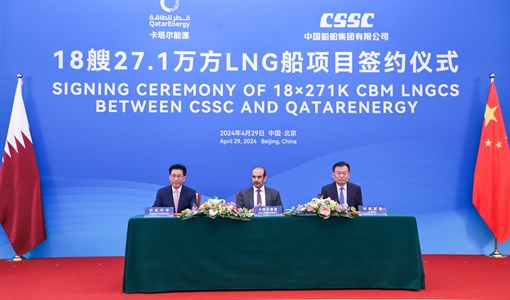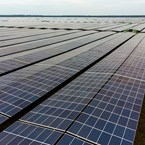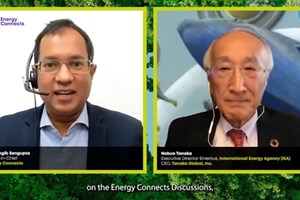Mexico’s Sheinbaum Wants Debt-Laden Pemex to Go Green
(Bloomberg) -- Mexico’s leading presidential candidate wants to revitalize the nation’s troubled state oil company with a new focus on clean energy. But first, Claudia Sheinbaum knows she has to fix Petroleos Mexicanos’ $106 billion debt problem.
“We have to work on two fronts: on the one hand, the refinancing of the debt,” the frontrunner said at Mexico’s annual banking convention in Acapulco Friday. “At the same time, the entry of Pemex into other energy sources or other types of electricity generation.”
Pushing Pemex to embrace new and cleaner technologies would be a substantial shift from its traditional oil-and-gas focus under President Andres Manuel Lopez Obrador. Bondholders warn it’s unlikely to succeed unless the company and government address Pemex’s financial woes, slash its debt and boost flagging production.

“Pemex doesn’t have the cash for green energy projects,” said Adriana Eraso, a corporate analyst at Fitch Ratings in New York. “Only in very rare cases are renewables profitable enough to make up for revenues generated from fossil fuels.”
Sheinbaum said Friday she expected Pemex to refinance its bonds ahead of upcoming maturities in 2025, a plan that may free up cash for the company to play a role in Mexico’s energy transition.
“Most likely the current Pemex CEO and the president are going to leave us with a long-term plan,” Sheinbaum said.
Cleaning up the image of Pemex — the most indebted company in emerging markets and the world’s most indebted oil producer — has potential global resonance as banks and investors increasingly eye companies committed to environmental, social and governance metrics.
A new direction for the beleaguered driller could also transform Mexico, which recently surpassed China as the largest US trading partner amid a potential nearshoring boom.
One of the realities Sheinbaum faces is that global oil majors are dialing back their green ambitions as returns on renewable investments sag. Companies including Shell Plc and BP Plc have cut their emissions reduction targets, citing “uncertainty in the pace of change in the energy transition.”
Unlike other oil majors, however, Pemex doesn’t have much financial breathing room to undertake a green shift. It’s facing billions in late payments to service providers and its infrastructure is crumbling after years of underinvestment, causing a slew of accidents, oil spills and methane leaks in recent years.
Sheinbaum, an environmental engineer and former Mexico City mayor who looks poised to replace Lopez Obrador, first outlined her energy strategy last month, on a national holiday commemorating the expropriation of foreign oil assets in 1938.
Her plan would cap Pemex’s oil production in coming years at around 1.8 million barrels a day — an increase from about 1.5 million barrels now — while the government focuses on sparking growth in green energy. She’d do that by broadening Pemex’s scope to include technologies such as lithium extraction and electric-vehicle infrastructure, and by empowering state power company Comision Federal de Electricidad to invest in renewable resources and bolster electricity transmission networks.
Sheinbaum would spend about $13.6 billion on new projects to boost Mexico’s use of renewable energy while still adding gas-burning power plants. She’d also increase wind and solar power generation, modernize hydroelectric stations and add about 3,850 kilometers (2,390 miles) of transmission lines.
Her blueprint also reflects a sustainability plan recently released by Pemex to attract ESG investors by slashing its greenhouse-gas emissions.

Critics fault Sheinbaum’s aim to keep financially distressed state entities at the center of Mexico’s energy sector, leaving private companies by the wayside. It’s a strategy that AMLO, as the current president is known, relied on to promote “energy sovereignty.” Since 2018, he’s rolled back the pro-market reforms of his predecessor and invested billions in growing Mexico’s domestic fuel-refining capacity.
“Sheinbaum’s recent statements have deviated from promises she made regarding a more private sector-friendly approach in the pre-campaign period,” said Alejandro Schtulmann, research director at Mexico City-based political consultancy EMPRA.
Sheinbaum said Friday that there must be clear rules for private sector investment in Mexico’s energy sector, and that public sector investments in Pemex would take time to “bear fruit.”
A Pemex spokesman didn’t respond to a request for comment.

Pemex’s oil and gas output has also withered to less than half of what it was two decades ago. Slashing debt is key to turning around the company’s finances, since money that could be spent fixing aging equipment is instead being used to cover unpaid bills and interest payments.
The company has lately relied on tax breaks and cash injections from the government to stanch the financial bleeding. AMLO has lavished support on Pemex, granting it as much as 1.37 trillion pesos (around $80 billion) over the course of his administration, which hasn’t reversed the company’s decline.

While investors expect government support to continue under Sheinbaum, she has said little about what she would do to address Pemex’s financial problems over the long term.
She’ll also be up against strained public finances. Mexico is facing its largest budget deficit since the 1980s as AMLO spends big at the end of his presidential term, according to Oscar Ocampo, an energy analyst at IMCO, a nonprofit that focuses on competitiveness.
“AMLO entered office with a much easier financial situation than Sheinbaum will inherit,” Ocampo said.
To be sure, Sheinbaum is still in campaign mode. Polls show her more than 20 percentage points up on opposition rival Xochitl Galvez, who is proposing a corporate restructuring for Pemex that would include selling assets and closing refineries, as well as opening the energy sector to private investment.
The frontrunner hasn’t strayed from AMLO’s stance of keeping state-owned companies at the forefront of Mexico’s energy sector, but that strategy may change if she wins on June 2, said Luis Maizel, a senior managing director at LM Capital Group in San Diego, which holds about $18.5 million in Pemex bonds.
“We’ll see Sheinbaum grow eight feet taller when she takes over,” Maizel said. “Mexico needs more energy and doesn’t have enough money. She’ll have to lean on the private sector.”
(Updates with additional comment from Sheinbaum in the sixth paragraph. An earlier version corrected the year in the 15th paragraph.)
©2024 Bloomberg L.P.
KEEPING THE ENERGY INDUSTRY CONNECTED
Subscribe to our newsletter and get the best of Energy Connects directly to your inbox each week.
By subscribing, you agree to the processing of your personal data by dmg events as described in the Privacy Policy.
More gas & LNG news

Texas Power Prices Signal Grid Stress in Another Long, Hot Summer
Apr 27, 2024
Texas Natural Gas Prices Plummet After Pipeline Fire
Apr 26, 2024
Exxon Disappoints on Non-Cash Charges Despite Guyana Boost
Apr 26, 2024
EU Weighs Sanctions on Russian LNG Projects, Transshipments
Apr 25, 2024
European Gas Traders Are Already Worrying About Next Winter
Apr 24, 2024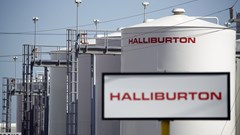
Halliburton Sees Best Profit in 12 Years Amid Smaller Shale
Apr 23, 2024
TotalEnergies agrees to purchase the remaining 50% of Malaysian upstream operator SapuraOMV
Apr 23, 2024
Heat Pump Makers Woo Contractors in Effort to Spur US Sales
Apr 22, 2024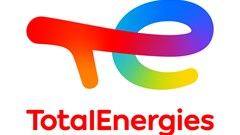
TotalEnergies launches Marsa LNG project and deploys multi-energy strategy in Oman
Apr 22, 2024
Europe’s Top LNG Plant Operator Wants to Move Into Ammonia, CO2
Apr 19, 2024
Why the energy industry is on the cusp of disruptive reinvention
Mar 12, 2024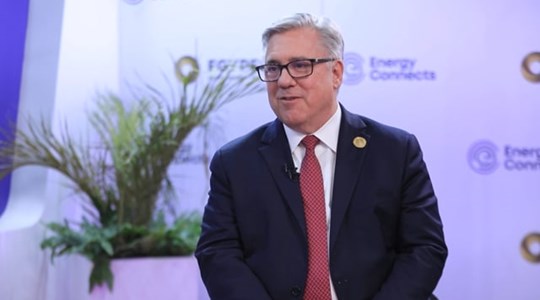
Chevron helping drive Egypt’s journey to become Africa’s energy powerhouse
Mar 11, 2024
Energy Workforce helps bridge the gender gap in the industry
Mar 08, 2024
EGYPES Climatech champion on a mission to combat climate change
Mar 04, 2024
Fertiglobe’s sustainability journey
Feb 29, 2024
India’s energy sector presents lucrative opportunities for global companies
Jan 31, 2024
Oil India charts the course to ambitious energy growth
Jan 25, 2024
Maritime sector is stepping up to the challenges of decarbonisation
Jan 08, 2024
COP28: turning transition challenges into clean energy opportunities
Dec 08, 2023
Why 2030 is a pivotal year in the race to net zero
Oct 26, 2023Partner content

Ebara Elliott Energy offers a range of products for a sustainable energy economy

Essar outlines how its CBM contribution is bolstering for India’s energy landscape

Positioning petrochemicals market in the emerging circular economy

Navigating markets and creating significant regional opportunities with Spectrum


